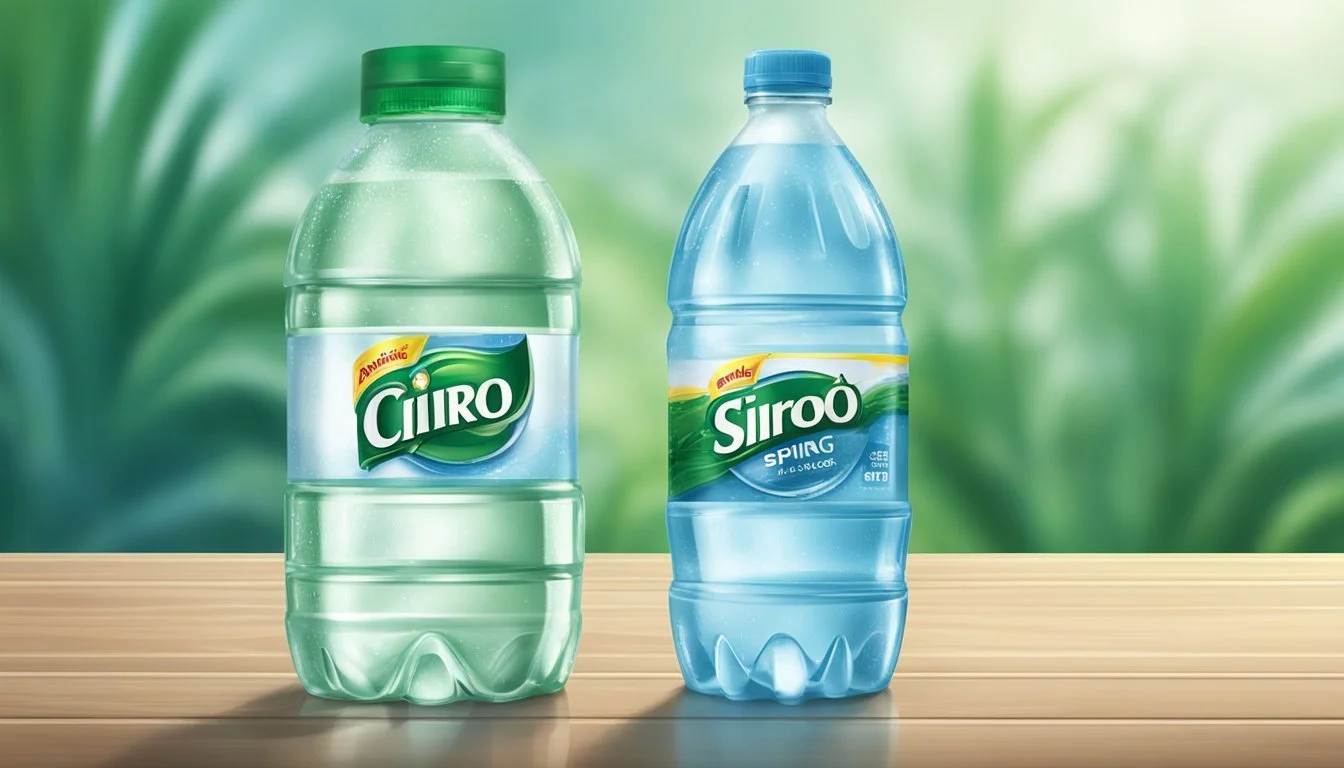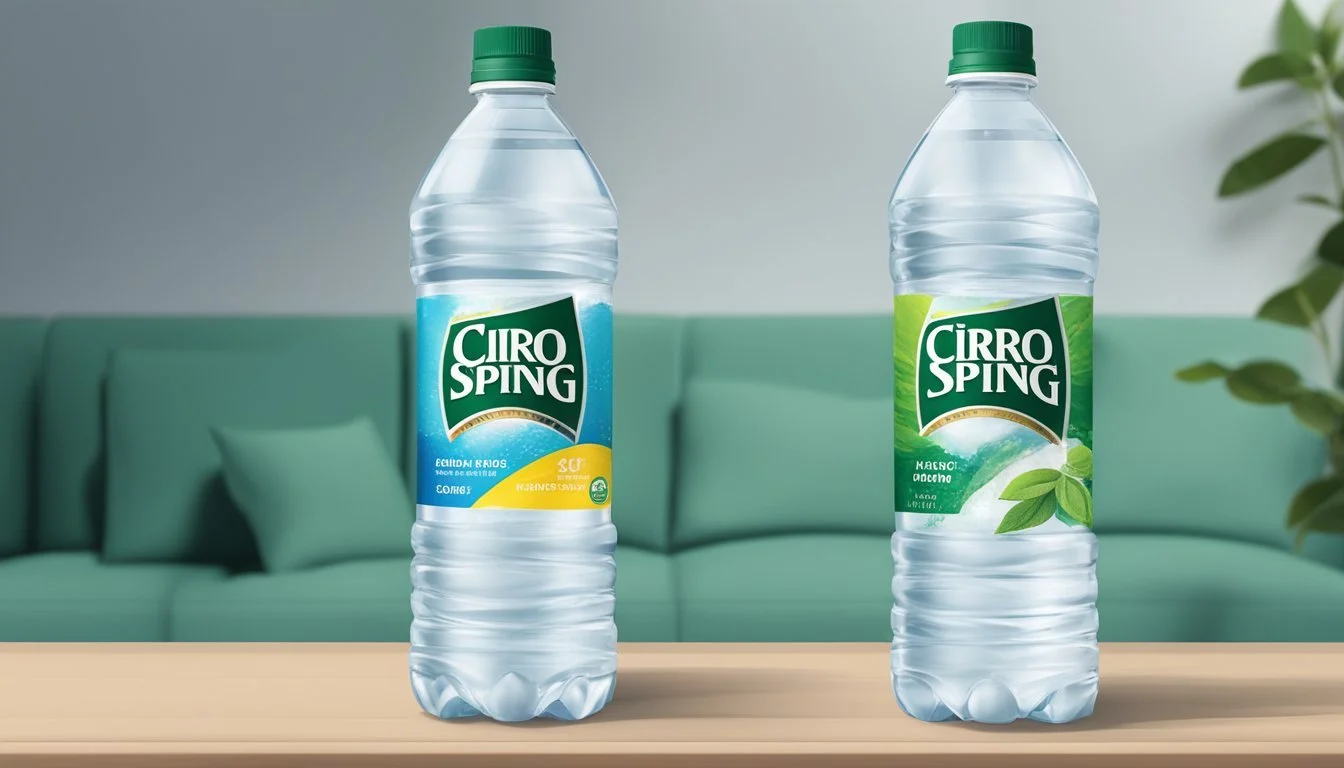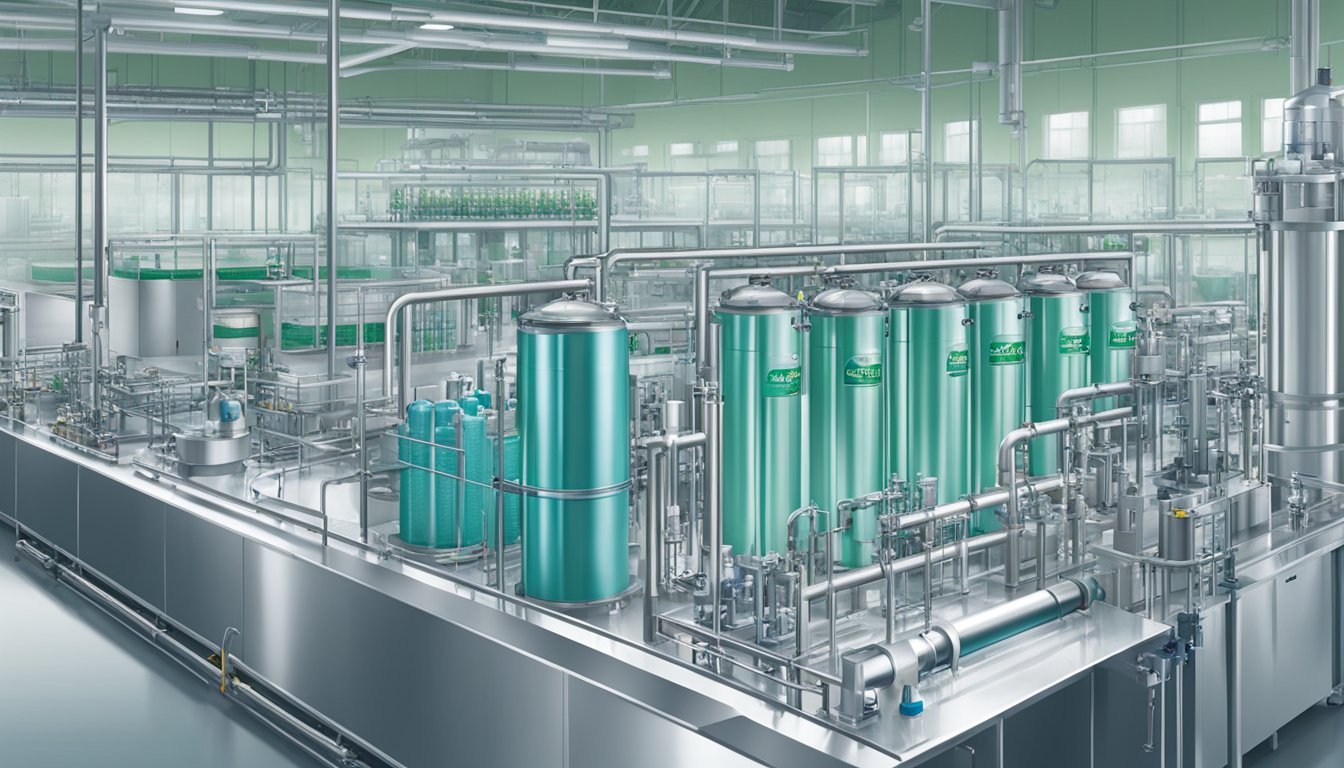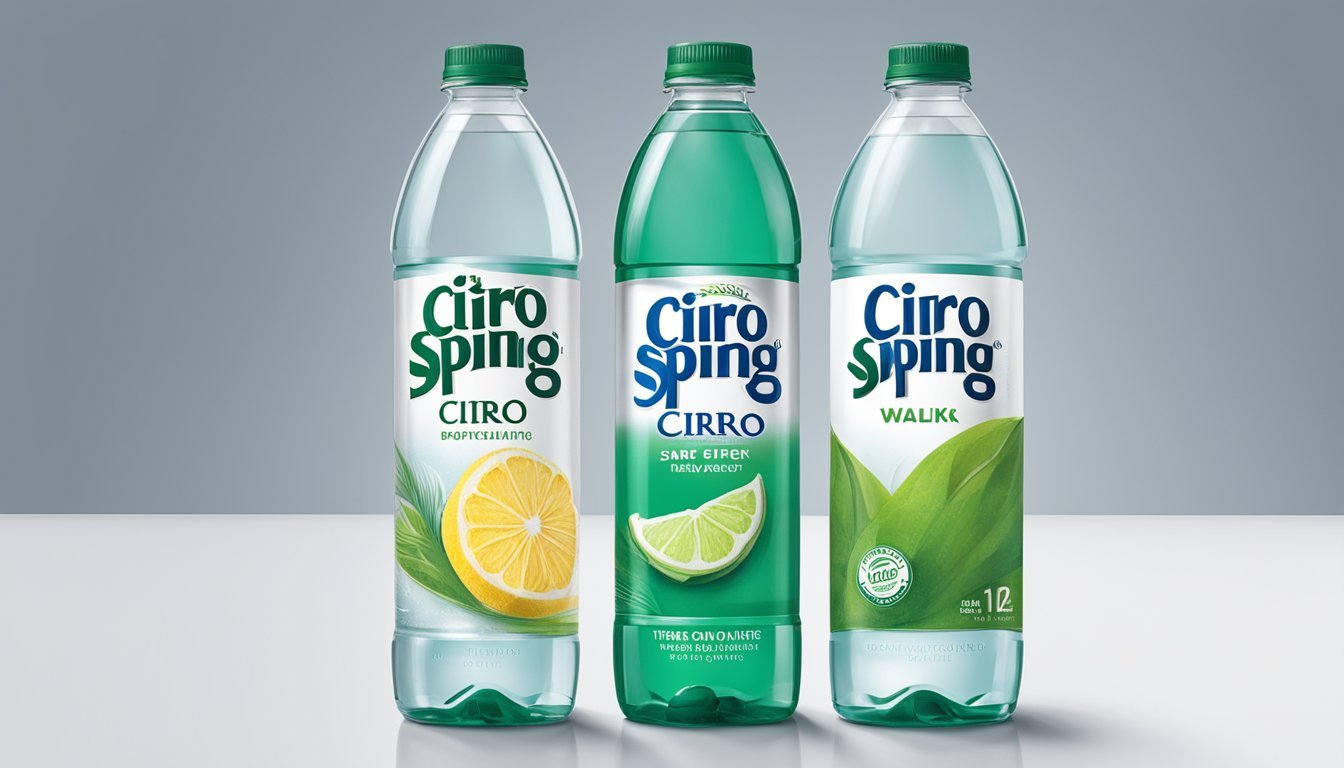Poland Spring vs. Cirro
Which Bottled Water is Better? A Comparative Analysis
When it comes to choosing the perfect bottled water, Poland Spring and Cirro often come up in the discussion due to their unique characteristics and wide availability. Poland Spring, marketed as "100% natural spring water from the heart of Maine," promises a crisp and refreshing taste. Cirro, on the other hand, is recognized for its premium quality and smooth, neutral flavor profile, appealing to those with a taste for sophistication.
For those who prioritize a natural and dependable hydration source, Poland Spring stands out due to its long history and reputation. Cirro's appeal lies in its refined taste and light, refreshing quality, making it a popular choice among premium bottled waters. Both brands offer something unique, catering to different preferences and ensuring consumers have quality options for their hydration needs.
Ultimately, the choice between Poland Spring and Cirro depends on personal preference and what one values most in their bottled water. The following sections will explore these factors in more detail, helping you determine which brand aligns better with your taste and hydration needs.
Historical Background of Bottled Water
The journey of bottled water dates back centuries and holds a unique place in history. Various brands, including Poland Spring and Cirro, have played significant roles in the evolution of this industry.
Origins of Bottling Water
Bottled water's origins can be traced back to the early European spas and wellness centers in the 17th century. Springs like those at Spa, Belgium, became famous for their healing qualities. Wealthy individuals began bottling this natural spring water for consumption outside the spa.
In the United States, the bottled water industry began in the 19th century. Companies like Hiram Ricker's Poland Spring started commercializing water sourced from natural springs. Early bottling methods were primitive, involving glass containers and manual sealing techniques. Modern advancements have streamlined these processes, increasing both efficiency and safety.
Poland Spring and Cirro in the Market
Poland Spring, one of the oldest bottled water brands in the U.S., first marketed its water in 1859. Originating from Poland, Maine, it prides itself on sourcing 100% natural spring water. It became a subsidiary of BlueTriton Brands and has maintained a reputation for quality and consistency over the years.
Cirro, a newer player in the bottled water market, also offers natural spring water but is known for its innovative approach. Utilizing cutting-edge filtration technology, Cirro ensures a consistent taste and purity in every bottle. Despite its shorter history, Cirro has managed to carve a niche in the competitive bottled water industry through its commitment to sustainability and health.
Understanding Water Sources
Water sources play a crucial role in determining the quality, purity, and taste of bottled water. Different sources such as natural springs, aquifers, groundwater, and surface waters each have unique characteristics.
Natural Springs and Aquifers
Natural springs are a popular source for bottled water, often praised for their purity. These springs are typically found in mountainous regions where water emerges directly from the ground. Poland Spring, for example, sources its water from springs located in Maine.
Aquifers, which are underground layers of rock or sediment that hold water, are another critical source. The water from aquifers is often extracted through wells and is known for its low contamination levels due to natural filtration processes.
Groundwater and Surface Waters
Groundwater is another essential source of bottled water, drawn from underground reserves. This water tends to be less affected by surface pollutants, making it a safer option for many consumers. Groundwater can be found in various regions, from Maine to Texas, depending on geological conditions.
Surface waters, such as rivers and lakes, are less commonly used due to higher exposure to contaminants. However, advanced purification techniques can make these sources viable for bottling. The choice of groundwater or surface water can significantly impact the taste and purity of the final product.
The Importance of Source in Water Quality
The origin of bottled water is vital in determining its quality. Water from natural springs and aquifers often boasts high mineral content, enhancing taste and health benefits. Conversely, water from less pristine sources may require more rigorous purification.
Companies like Poland Spring emphasize their use of natural sources to market their products. Understanding the origin of your bottled water ensures you are consuming a product that meets your quality standards. This is particularly important for those who prioritize the ecological footprint and sustainability efforts of water brands.
Chemical Composition of Bottled Water
Bottled water is often marketed based on its mineral content, pH levels, and overall safety. Understanding these key features is essential for making informed choices.
Essential Minerals and Electrolytes
Minerals and electrolytes in bottled water are crucial for health. They help maintain hydration, regulate muscle function, and support various bodily functions.
Calcium and magnesium are vital minerals found in many bottled waters. Calcium is essential for bone health and muscle function, while magnesium supports muscle and nerve functions.
Sodium and potassium are important electrolytes present in bottled water. Sodium regulates fluid balance and blood pressure, whereas potassium aids muscle contractions and nerve signals.
PH Levels and Alkalinity
The pH level indicates the acidity or alkalinity of the water. A pH of 7 is considered neutral. Bottled water may range from slightly acidic to alkaline.
Neutral pH is often preferred for daily consumption, as it is considered safe and mild. Brands with higher pH levels may be marketed as alkaline water, claiming health benefits such as neutralizing acid in the body.
Alkaline water is said to help improve hydration and reduce acidity, though scientific evidence supporting these claims varies.
Comparing Poland Spring and Cirro
Poland Spring and Cirro differ in their chemical compositions. Poland Spring, derived from natural springs, is known for its balanced mineral content and neutral pH.
It typically contains higher amounts of calcium and magnesium, contributing to its taste and potential health benefits.
Cirro, a brand that often emphasizes purity and taste, may have lower levels of certain minerals. Its pH levels and mineral content can vary depending on the source.
While Poland Spring is scrutinized for potential microplastics and chemicals, such as phthalates, Cirro promotes rigorous filtration to ensure purity.
Rectangular cells with folds:
| Brand | Key Minerals | Average pH | Special Notes |
|----------------|-----------------------|-------------|----------------------------------------------|
| Poland Spring | Calcium, Magnesium | 7.2 - 7.6 | Natural spring source, concerns about plastics|
| Cirro | Sodium, Potassium | 6.8 - 7.4 | Filtered for purity, emphasis on taste |
Consumers should consider these factors when choosing between the two brands.
Taste Profile
This section examines the flavor complexities, smoothness, and overall taste profiles of Poland Spring and Cirro bottled waters.
Factors Influencing Taste
The taste of bottled water can vary due to a range of factors. Minerals play a prime role. Poland Spring is sourced from natural springs, which contributes to its distinct mineral content, giving it a slightly crisp taste. In comparison, Cirro usually undergoes additional purification processes, resulting in a more neutral taste.
The water source also makes a difference. Poland Spring derives its water from natural springs in Maine. This regional characteristic affects its mineral profile and taste. Cirro, on the other hand, often sources its water from multiple locations and focuses on consistent purification standards.
Temperature influences taste perception. Both brands are best enjoyed chilled, which enhances their refreshing qualities. Room temperature drinking may reveal subtle flavors otherwise unnoticed in colder servings.
Blind Taste Tests
Blind taste tests provide insights into consumer preferences for Poland Spring and Cirro. Participants often note Poland Spring's crisp and slightly mineral-rich taste, identifying it as clean and natural. This is attributed to its specific mineral content and natural spring origin.
In contrast, Cirro is frequently described as having a neutral, smooth taste. This smoothness is a result of the extensive purification processes, which remove most minerals. Testers often find Cirro to be less distinctive but very refreshing.
Statistical results from these tests generally favor Poland Spring for those who prefer a mineral presence. Conversely, Cirro appeals more to those who like a smoother, less pronounced flavor. Preferences may vary based on individual tastes and experiences with bottled water brands.
Treatment and Purification Processes
Poland Spring and Cirro both employ a range of processes to treat and purify their water. These methods aim to ensure the water's safety, remove contaminants, and enhance taste through various techniques like filtration and sterilization.
Filtration and Reverse Osmosis
Poland Spring sources its water from natural springs, but additional filtration is applied to ensure its quality. The water undergoes a multi-step filtration process to eliminate suspended solids and other impurities.
Cirro uses advanced purification methods, primarily reverse osmosis. This technique forces water through a semi-permeable membrane, removing the majority of dissolved impurities, including salts, minerals, and other contaminants.
While both brands use filtration, reverse osmosis provides Cirro with a more standardized and controlled purification process. This method is particularly effective at producing ultra-purified water with minimal contaminants, making it a choice for those preferring a more neutral taste.
Disinfection and Sterilization
Poland Spring emphasizes natural purity but still employs disinfection methods such as ozone treatment and ultraviolet (UV) light. These methods kill bacteria and other microorganisms without adding chemicals to the water.
Cirro relies on similar sterilization techniques. Ozone treatment, UV light, and occasionally distillation are used to ensure the utmost cleanliness and safety of its water. These processes effectively eliminate any potential microbial contamination, often going beyond standard regulatory requirements.
By using ozone and UV light, both brands avoid the need for chemical disinfectants like chlorine, which can alter the taste and introduce unwanted byproducts.
Effects on Purity and Taste
The purification processes have a significant impact on the taste and purity of both brands.
Poland Spring retains some natural minerals from its spring sources even after filtration, which can contribute to its distinctive taste. Many consumers appreciate the somewhat mineral-rich profile that distinguishes it from heavily purified waters.
Cirro, through reverse osmosis, produces water that is almost entirely free of dissolved impurities. This results in a very clean, neutral taste, devoid of any mineral or chemical traces. For those who prefer water with no aftertaste, Cirro can be an ideal choice.
Health and Safety Standards
When comparing Poland Spring and Cirro bottled waters, it is crucial to examine the health and safety standards each brand adheres to. Key considerations include government regulations, potential contaminants, and third-party certifications ensuring product safety and quality.
FDA and EPA Regulations
Poland Spring and Cirro must comply with the strict standards set by the Food and Drug Administration (FDA) and the Environmental Protection Agency (EPA). The FDA oversees the labeling and safety of bottled water, ensuring it meets specific health criteria. Meanwhile, the EPA sets safety standards for contaminants such as lead, fluoride, and bacteria.
Both brands claim to exceed these government benchmarks. The regulatory framework ensures that contaminants like heavy metals and bacteria are within safe limits, protecting consumer health. Adherence to these regulations is critical for maintaining product safety and consumer trust.
Presence of Contaminants
Contaminants in bottled water can include heavy metals, bacteria, and chemicals like PFAS. Poland Spring has undergone testing to ensure levels of these substances remain below the thresholds established by the FDA and EPA. Studies have indicated minimal presence of harmful contaminants in its products.
Cirro also adheres to these safety standards. Regular testing helps ensure that any contaminants are managed effectively, safeguarding consumer health. Both brands highlight their commitment to delivering safe drinking water free from significant levels of lead, fluoride, and other potential hazards.
Third-Party Testing and Certifications
Third-party testing plays a fundamental role in validating the safety and quality of bottled water. Poland Spring employs third-party experts to perform rigorous testing to meet and exceed federal guidelines. These tests check for contaminants and ensure the water's mineral content remains within safe and acceptable levels.
Cirro also utilizes independent testing agencies to certify its water quality. Certifications provide an additional layer of assurance, confirming that both brands maintain high standards for purity and safety. Consumers can trust that both Poland Spring and Cirro have undergone comprehensive evaluations by unbiased organizations, reinforcing their commitment to quality and consumer health.
Environmental Impact and Sustainability
The examination of the environmental impact and sustainability of Poland Spring and Cirro bottled waters involves looking into the bottled water market dynamics, production practices, and efforts toward sustainability. Key areas include market trends, environmental considerations, and the adoption of sustainable practices.
Bottled Water Market Analysis
The bottled water market has seen significant growth in recent years. Poland Spring, a product of BlueTriton Brands, has maintained a strong market presence, particularly in the United States.
Cirro, although newer, aims to capture market share by promoting its environmental credentials.
Key market drivers include increased consumer demand for convenience, natural water sources, and sustainable packaging.
Both brands face competition from established and emerging players who emphasize environmental sustainability.
Market trends show a growing consumer preference for eco-friendly packaging, such as recycled plastic and boxed water.
Environmental Considerations of Bottling
The environmental impact of producing bottled water largely revolves around resource extraction and packaging.
Water extraction can lead to depletion of natural springs, which affects local ecosystems. Poland Spring sources its water from multiple springs in Maine, raising concerns about over-extraction.
Cirro focuses on sourcing water responsibly, emphasizing minimal environmental disturbance.
Packaging is another significant concern. The production and disposal of plastic bottles contribute to pollution and waste.
Poland Spring has pledged to use 100% recycled plastic in its still water bottles, reducing its environmental footprint.
Sustainable Practices and Challenges
Sustainability initiatives are critical for both brands. Poland Spring's MadeBetter program highlights its commitment to using recycled materials and reducing waste.
They work closely with plastics processors to ensure a sustainable supply chain.
Cirro aims to minimize its environmental impact by using biodegradable and recyclable materials.
Despite these efforts, challenges remain. High production costs and ensuring the availability of sustainable materials are significant hurdles.
Both brands must continuously innovate to meet environmental standards and consumer expectations, ensuring that their sustainability claims are genuine and impactful.
Comparative Analysis
This section examines the differences between Poland Spring and Cirro in terms of market share, popularity, and consumer preferences.
Market Share and Popularity
Poland Spring is a well-established brand in the bottled water market. It has held a significant market share in the U.S. for years. Known for its wide distribution and availability, Poland Spring often ranks highly in sales volumes. Its broad recognition results from effective marketing and a longstanding presence in the market.
Cirro, on the other hand, is a comparatively newer brand. Though it lacks the extensive history of Poland Spring, Cirro has grown rapidly. Its reputation for quality and unique product offerings helps it carve out a niche among premium bottled water enthusiasts.
Consumer Preferences
Consumers often choose Poland Spring for its consistency and widespread availability. It is a go-to option for many due to its moderate price point. People appreciate its natural mineral content, though some criticisms exist about its claimed spring source.
Cirro caters more specifically to health-conscious consumers. Known for its naturally alkaline pH, Cirro is valued for potential health benefits. The crisp and fresh taste appeals to those looking for a premium experience. Its packaging and branding also aim for an upscale market, distinguishing it from more mass-market options.
Conclusion
Poland Spring offers spring water known for its crisp, refreshing taste. Sourced from natural springs in Maine, it provides a reliable source of clean drinking water that many consumers trust. The brand's long history and adherence to high-quality standards make it a popular choice for those seeking natural hydration.
Cirro, a brand known for its purified water, utilizes advanced filtration processes to ensure consistency and quality. The absence of impurities and the added minerals enhance the taste and provide essential benefits, making it a widely respected option.
Comparison Overview:
Poland Spring Cirro Source Natural Springs Purified Water Taste Crisp, Natural Consistent, Mineral-enhanced Filtration Minimal Advanced Hydration Quality High High
Key Points:
Poland Spring appeals to those preferring natural spring water.
Cirro suits individuals who value purified water with added minerals.
In making a choice between Poland Spring and Cirro, it ultimately depends on personal preference for either natural spring sources or advanced purified options. Both brands provide high-quality hydration and clean drinking water, catering to different needs and tastes.
More About Poland Spring
Acqua Panna vs Poland Spring: Which Bottled Water is Better?
Boxed Water vs Poland Spring: Which Bottled Water is Better?
Core Hydration vs Poland Spring: Which Bottled Water is Better?
Ice Mountain vs Poland Spring: Which Bottled Water is Better?
Icelandic Glacial vs Poland Spring: Which Bottled Water is Better?
Mountain Valley Spring Water vs Poland Spring: Which Bottled Water is Better?
Nestle Pure Life vs Poland Spring: Which Bottled Water is Better?
Poland Spring vs Aqua Carpatica: Which Bottled Water is Better?
Poland Spring vs Cascade Mountain: Which Bottled Water is Better?
Poland Spring vs Castle Rock: Which Bottled Water is Better?
Poland Spring vs Crystal Geyser: Which Bottled Water is Better?
Poland Spring vs Crystal Lake: Which Bottled Water is Better?
Poland Spring vs Essence pH10: Which Bottled Water is Better?
Poland Spring vs Hawaii Volcanic: Which Bottled Water is Better?
Poland Spring vs Hawaiian Springs: Which Bottled Water is Better?
Poland Spring vs Kirkland Signature: Which Bottled Water is Better?
Poland Spring vs Liquid Death: Which Bottled Water is Better?
Poland Spring vs Proud Source: Which Bottled Water is Better?
Poland Spring vs Purely Sedona: Which Bottled Water is Better?
Poland Spring vs Richard's Rainwater: Which Bottled Water is Better?
Poland Spring vs San Pellegrino: Which Bottled Water is Better?
Poland Spring vs Simple Truth: Which Bottled Water is Better?
Poland Spring vs Solan de Cabras: Which Bottled Water is Better?
Poland Spring vs Talking Rain AQA: Which Bottled Water is Better?
Poland Spring vs Weird Water: Which Bottled Water is Better?
Poland Spring vs Whole Foods 365: Which Bottled Water is Better?
Poland Spring vs Whole Foods Italian Still Mineral water: Which Bottled Water is Better?
Poland Spring vs Zephyrhills: Which Bottled Water is Better?








